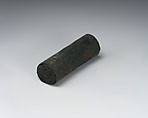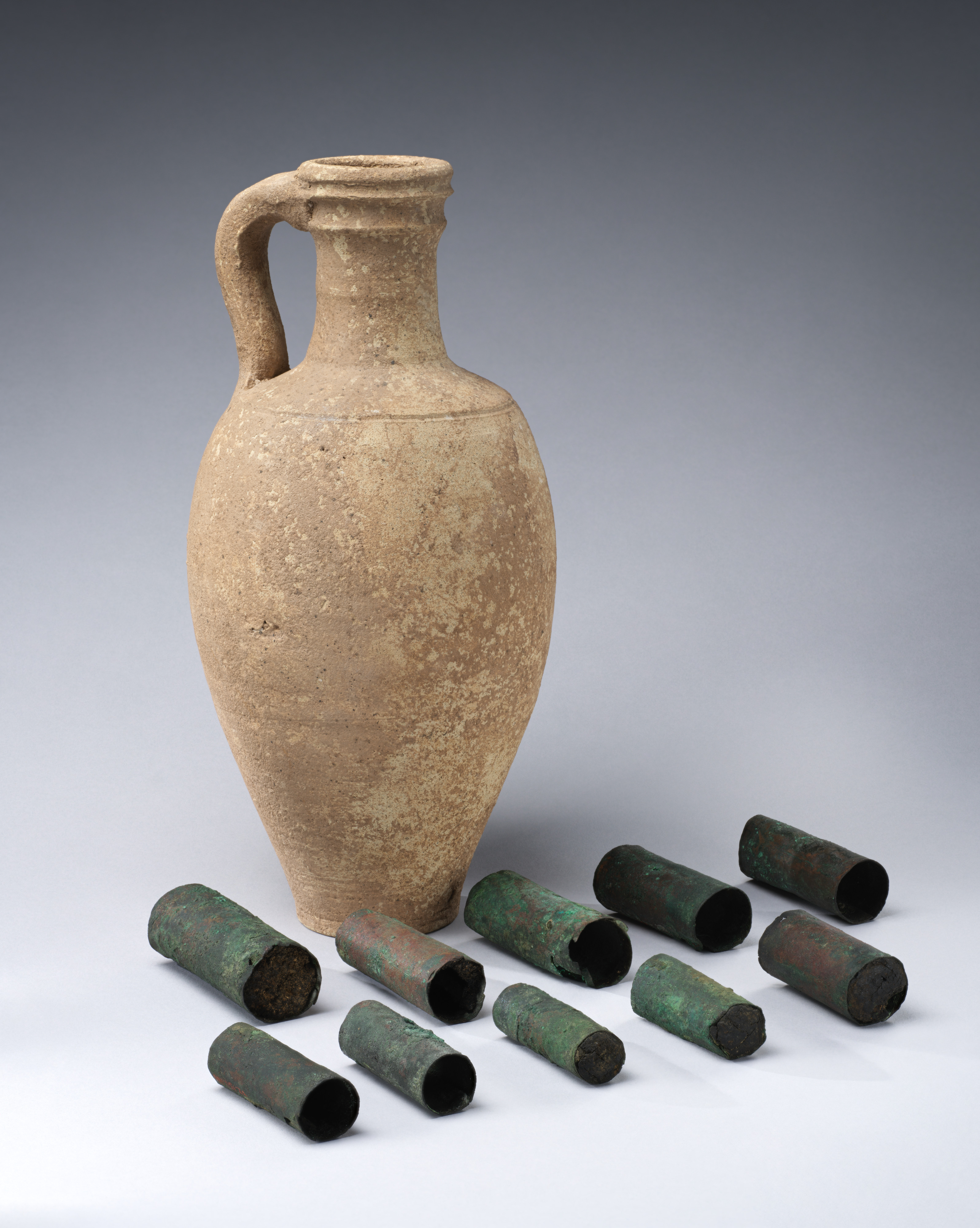Amulet case
Not on view
A group of ten amulet cases (32.150.95, 32.150.96, 32.150.97, 32.150.98, 32.150.99, 32.150.100, 32.150.101, 32.150.102, 32.150.103, 32.150.104) were found inside a plain unglazed jar (32.150.94). The cases are made from sheet copper rolled into cylinders and the ends stopped with bitumen. Although only one fragment of papyrus was found, the texts probably contained exorcisms or blessings.
The city of Ctesiphon was located on the east bank of the Tigris River, 20 miles (32 km) south of modern Baghdad in Iraq. It flourished for more than 800 years as the capital of the Parthians and the Sasanians, the last two dynasties to rule the ancient Near East before the Islamic conquest in the seventh century. Systematic excavations in the Ctesiphon area were undertaken by an expedition in 1928–29 sponsored by the German Oriental Society (Deutsche Orient-Gesellschaft). The Metropolitan Museum of Art and the Staatliche Museen, Berlin, undertook a joint expedition for one season in 1931–32. Several excavations were conducted, including at the main palace (Taq-i Kisra), in a small fortified area south of the palace at Tell Dheheb, at multiple houses at the mounds of Ma’aridh, and at additional houses at a small mound called Umm ez-Za’tir.
Over the course of the excavations in the Ctesiphon area, six houses from a series of small mounds called el Ma’aridh were excavated. These houses follow typical Sasanian design with a mix of square and elongated rooms. Ma’aridh II is a large house that is entered through a small entry way rather than directly from the street. The house is divided into a utilitarian, or service, sector on the eastern side of the building, and a monumental decorated space to the west of the entryway. The western rooms were decorated with pillars, a double horseshoe archway, and stucco reliefs. A long barrel vaulted arched room, 19 meters in length, was probably the most important room of the house. It was entered through a smaller room with four pillars. This large house, with the excavated portion revealing more than 1800 square meters, represents an elite household.
Excavation Number: O.1406f
Due to rights restrictions, this image cannot be enlarged, viewed at full screen, or downloaded.
This artwork is meant to be viewed from right to left. Scroll left to view more.



